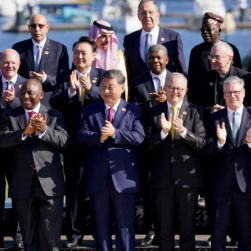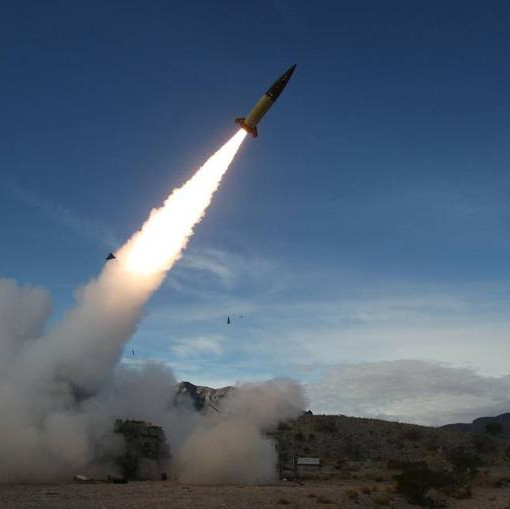The United States is ready to put weapons and missile-tracking sensors in space to spot incoming ballistic missiles, according to the country’s defense spending bill for the 2019 fiscal year, The Drive reports. At the moment, the unprecedented $716 billion draft military budget agreed with both chambers of US Congress is awaiting signing by President Donald Trump.
According to the news website, the Senate wants these space-based missile defense weapons and sensors “no matter what,” even if the plan runs counter to the national anti-missile security strategy and argues against the opinion of many US military experts. The bill calls for deploying the sensors no later than the end of 2022. They will be positioned to respond to threats from specific parts of the world, such as the area around Iran or North Korea. Overall, the program for deploying weapons in outer space should be implemented during the next decade.
It is worth recalling here that the United States had previously developed a program called the Strategic Defense Initiative (SDI), better known as Star Wars thanks to the media. President Ronald Reagan announced its inception in March 1983, the date that can be safely called the apotheosis of the Cold War between the West and the East.
The SDI program involved building a powerful anti-missile shield with its main components based on low-earth orbits. The main goal of that program was to gain complete dominance in outer space and be able to destroy Soviet ballistic missiles and reentry vehicles at any phase of their flight. “He who controls space, controls the world,” the SDI program supporters loved to repeat.
Initially, the Star Wars program only involved the United States. However, as the project progressed, its NATO partners, primarily Britain, joined it. That was a costly affair; the R&D spending alone reached $4.32 billion in 1983. The overall spending on the program’s implementation was even more impressive: some experts believe it cost the US taxpayers $100 billion.
Thirty-five years ago the Star Wars program made quite a stir in the world. The writer of these words at the time worked as a staff correspondent of the Soviet State Television and Radio in the UK; nearly all meetings with the British included questions concerning SDI. The questions were very relevant, since officials in London were planning to join the US program. Ordinary English people were primarily interested in how effective the program was and did not want the huge funds they pay be wasted. They also asked how the Soviet Union could respond to the Star Wars program. We had to explain even then, at the initial stage of the project’s development, that SDI was unlikely to be implemented and was actually ineffective anyway.
There is a legend that the idea came to President Reagan after watching another episode of George Lucas’s epic space opera. Even though the SDI, with its high cost and low effectiveness, was never actually implemented, it became one of the most famous military programs in the history of mankind and had a significant impact on the Cold War outcome.
The SDI was nothing if not an extremely ambitious project. Its complexity paled before such famous programs as the Manhattan Project that produced the first nuclear weapons or the Apollo. Suffice it to say that only a small part of the SDI components were to use more or less developed or proven military technologies (anti-missiles); the true shock power of the Star Wars was to be based on new weapons using innovative physical principles.
Allow me to underscore that the SDI has never been actually implemented. The scale of technology problems facing the developers made the US leadership quietly curtail the program ten years after its spectacular announcement. It has not even produced any tangible results. However, even if the US then risked wasting hundreds of billions on its near-Earth projects, the Soviet Union at that time had most powerful countercapabilities that cost the Soviet economy 90% cheaper, even at world prices. Figuratively speaking, every ruble spent by the Soviet Union could thwart a hundred dollars invested by the West in its Star Wars system.
It is clear now that the SDI was in fact the greatest bluff in modern history. Even the powerful US economy would not have been able to pull it – the cost of its full implementation was close to several hundred billion dollars.
Now, several decades later, the United States decides to repeat its star scam of the 1980s. Have not the lessons of the past taught Washington anything? It seems so, because the White House is about to step on the same rake: to spend billions of dollars on something that is not likely to yield real results, especially considering Russian’s most recent military technology President Vladimir Putin spoke about and demonstrated.
It is no secret that Washington's current plans to put weapons in outer space are primarily directed against Russia. This follows directly from the US defense spending plan for 2019 announced by White House Press Secretary Sarah Sanders last week. According to her, the White House welcomes the defense budget including “measures against the Russian aggression.”
The bill does in fact contain a number of measures to “contain Russia,” including financing of NATO operations in Europe, military assistance to Ukraine, a ban on the Pentagon’s cooperation with the Russian Defense Ministry and financing the development of compact nuclear warheads.
It is therefore quite natural that the Russian Foreign Ministry reacted to the news of its approval by the Congress by issuing a statement urging Washington to abandon the creation of a space echelon.
“Such actions by US lawmakers do not contribute to a constructive dialogue on strategic stability, or to a favorable atmosphere within the framework of the review process on the destabilizing effect on strategic stability and international security,” the statement said.
“We count on Washington to finally abandon the plans that would have the most negative impact on the state of international security, and to support the responsible countries’ efforts aimed at real strengthening of international security and strategic stability in deeds, not words,” the Russian Foreign Ministry said.
Earlier, President Vladimir Putin noted that Moscow is interested in restraining the arms race, but he also doubted that this would coincide with the interests of the American side.
It should be emphasized that at present, no country has weapons in outer space, although, according to international agreements, the ban only concerns weapons of mass destruction.









